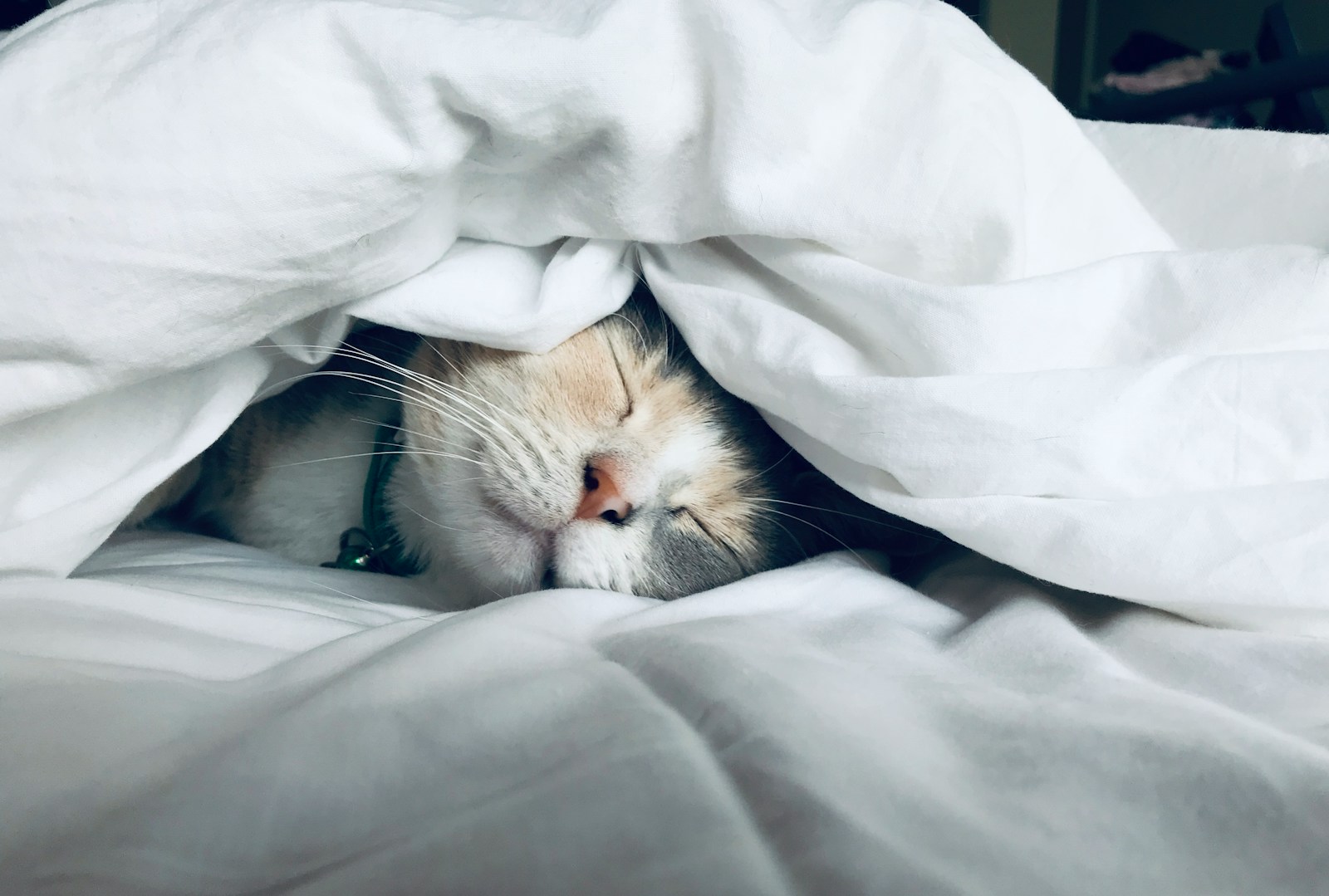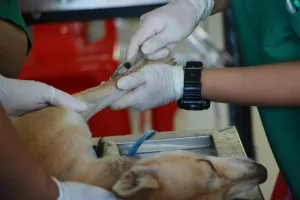Sleep is one of the most fascinating and universal phenomena in the animal kingdom. While humans have long been aware of the role that dreams play in our lives, less attention has been given to whether animals also experience dreams. Do dogs chase rabbits in their sleep? Do cats imagine themselves as apex predators stalking prey? The idea that animals dream has intrigued pet owners, scientists, and philosophers for centuries. Recent advancements in neuroscience and sleep research have given us insights into this question and shed light on the mysterious world of animal dreams.
This article explores the scientific evidence supporting the idea that animals do indeed dream, how different species sleep and dream, and what the purpose of dreaming might be across various types of animals.
The Science Behind Dreaming: Human and Animal Sleep Cycles
To understand whether animals dream, it’s essential first to look at how dreams occur in humans. Dreaming is most closely associated with rapid eye movement (REM) sleep, one of the stages of the sleep cycle. During REM sleep, brain activity resembles that of a person who is awake, and it is during this phase that vivid dreaming typically occurs.
Humans go through several stages of sleep, including:
- Non-REM Stage 1: The transition from wakefulness to sleep.
- Non-REM Stage 2: Light sleep, when heart rate slows and body temperature drops.
- Non-REM Stage 3: Deep sleep or slow-wave sleep, where the body and brain repair and regenerate.
- REM Sleep: The stage most associated with dreaming, characterized by rapid eye movement, increased brain activity, and temporary paralysis of major muscle groups.
These stages cycle throughout the night, and REM periods become longer as sleep progresses. In humans, up to 20-25% of total sleep is spent in REM, and it’s during this stage that dreams become most vivid and emotionally charged.
But does this pattern hold true in animals? Research suggests that many animals have similar sleep cycles and experience REM sleep, indicating that they might also dream.
Evidence of Dreaming in Animals
Scientists have gathered compelling evidence suggesting that animals dream during REM sleep. The key studies involve monitoring brain activity in animals and comparing it to that of humans during different stages of sleep. Here are some of the findings:
Brain Activity in Animals During Sleep
The pioneering work of sleep researcher Michel Jouvet in the 1950s laid the foundation for our understanding of REM sleep in animals. Jouvet studied cats and found that when their brain activity during REM sleep was recorded, it was almost identical to that observed when they were awake. Interestingly, when Jouvet disabled the part of the brain that causes muscle paralysis during REM sleep, the cats began to move as if they were engaging in typical waking activities—such as stalking and pouncing—while still asleep. This suggests that they were acting out dreams.
Rats and Memory Replay in Sleep
A more recent study conducted at the Massachusetts Institute of Technology (MIT) looked at rats’ brain activity during both waking and sleep states. Researchers found that the patterns of brain activity recorded while the rats were navigating mazes were replayed during REM sleep. This replay of memory patterns strongly indicates that the rats were dreaming about running through the mazes, effectively reliving their daily experiences in a dream state.
Dogs and Their Dreaming Habits
Anyone who has observed a dog twitching, barking, or running in its sleep can attest that dogs appear to dream. Studies on canine sleep patterns show that dogs, like humans, enter REM sleep and display brainwave activity similar to that seen when they are awake. The likelihood is that dogs are dreaming about familiar activities such as running, playing, or interacting with their owners.
Birds and the Curious Case of Avian REM Sleep
Birds also experience REM sleep, although it’s often much shorter in duration compared to mammals. The zebra finch, for instance, has been studied for its complex songs. Research indicates that during sleep, the neural patterns involved in singing are replayed, suggesting that birds may be dreaming about their songs. This is especially fascinating because it hints at the possibility of dreaming not just about images but about sounds as well.
The Purpose of Dreaming: Why Do Animals Dream?
While it’s clear that many animals do experience something akin to dreaming, the purpose of these dreams remains an area of debate. Scientists have put forth several hypotheses as to why animals dream.
Memory Consolidation
One of the most widely accepted theories is that dreaming plays a role in memory consolidation. When humans dream, we often replay experiences or emotions from the day, which is believed to help in organizing and storing memories. The studies on rats replaying maze-running sequences during sleep support the idea that animals use dreams to solidify memories of important tasks or survival-related experiences.
Problem Solving and Learning
In humans, dreams sometimes serve as a space for problem-solving or processing complex emotions. For example, a person might dream about resolving a conflict or finding a creative solution to a challenge faced during the day. There’s growing evidence that animals might also use dreams for this purpose. Some studies suggest that animals can rehearse or refine survival strategies in their dreams, which could give them an advantage in real-life situations.
Emotional Processing
REM sleep in humans is closely linked to the processing of emotions, especially those related to stress or trauma. Given the similarities in brain activity during REM sleep in animals, it’s plausible that they, too, use this time to process emotions. This could explain why pets might appear to dream more actively after a particularly stimulating or stressful day.
Species-Specific Dream Content
It’s likely that different species dream about different things based on their unique lifestyles and survival needs. For a predator like a lion, dreams might involve stalking prey, while for a prey animal like a rabbit, dreams could be more focused on evading danger. The content of dreams in animals might be deeply tied to the instincts and challenges particular to their species.
How Widespread is Dreaming in the Animal Kingdom?
While many mammals and birds are known to dream, scientists are still exploring the full range of species that experience REM sleep and, by extension, dreams.
Mammals
Most mammals, including humans, dogs, cats, rodents, and primates, experience REM sleep. The more developed the cerebral cortex—the part of the brain involved in higher-order thinking—the more complex the dreams are likely to be. This suggests that animals like dolphins, elephants, and even horses could have rich dream lives, although studying these larger animals presents practical challenges.
Birds
Birds, as mentioned earlier, also experience REM sleep. However, the structure of bird sleep is different from that of mammals. While mammals might experience long bouts of REM sleep, birds have shorter, more frequent bursts of REM. This could mean that their dreams are brief but still significant. Migratory birds, which sometimes sleep while flying, also present an interesting case for how sleep and dreaming might be adapted to extreme environments.
Reptiles, Amphibians, and Fish
Research into the sleep patterns of reptiles, amphibians, and fish is less conclusive. Some studies suggest that certain reptiles, like bearded dragons, enter a sleep stage that is somewhat akin to REM sleep, but it remains unclear whether they actually dream. The lack of a neocortex, which is present in mammals and birds, could mean that these animals do not have the same capacity for dreaming. However, further research is needed to determine the full extent of dreaming across these species.
The Ethical Implications of Animal Dreams
Understanding that animals dream opens up broader ethical questions about how we treat them. If animals are capable of experiencing complex dreams, it suggests a level of consciousness and cognitive complexity that should be respected. For pet owners, this reinforces the idea that our pets have rich inner lives, including the ability to experience joy, fear, and perhaps even existential reflections similar to our own.
For animals in captivity, such as those in zoos or laboratory settings, it raises questions about how their sleep and dreaming might be affected by stress or unnatural environments. Ensuring that animals have environments conducive to healthy sleep becomes not just a matter of physical health, but also of mental well-being.
Conclusion: The Mystery of Animal Dreams
While the science of animal dreaming is still evolving, the evidence so far suggests that many animals do indeed dream. From the twitching paws of a dreaming dog to the song-filled dreams of a zebra finch, the animal kingdom is likely filled with creatures reliving their experiences, processing emotions, and perhaps even exploring new ideas in their sleep.
As we continue to study sleep and dreams in animals, we gain not only a deeper understanding of them but also a renewed appreciation for the shared experiences that connect all living beings. Whether these dreams are simple reflections of daily activities or complex narratives rich in emotion and meaning remains one of the most intriguing mysteries in the natural world. The more we learn, the more we are reminded of the interconnectedness of life and the profound inner worlds that even the smallest creatures may possess.
Dreams are, it seems, not just a human experience but a universal one that bridges species, revealing the hidden depths of the animal mind.




